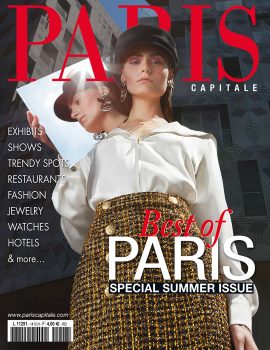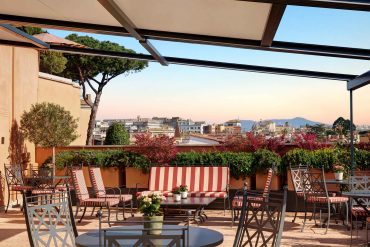Le Meurice The inherited grace
Picasso is the subject of one of the three cultural getaways of the Meurice offered to its guests (with Rodin and Monet), in private or in small groups, illuminated by the lights of a specialist who adapts his itinerary to the knowledge and wishes of the participants. These itineraries dotted with little-known anecdotes are as many spatial-temporal journeys in the life and work of these artists who have in common to have lived in Paris. And for two of them, to have a link with the Tuileries garden. Installed on the terrace of the Orangerie, a bronze version of Rodin’s Kiss thus becomes the anchor and starting point of the circuit dedicated to the “father of modern sculpture”. As for Monet, he painted the park several times, and one of his paintings, made in 1876, reveals the same panorama as that which offers itself in majesty from the roof of Le Meurice. This love of the palace for art in all its forms finds its extension in the taste for beautiful things, great craftsmanship, high-flying know-how sublimated with each renovation, under the impulse of its general manager Franka Holtmann. Upon her arrival in 2006, she entrusted the embellishment of the common areas to the great Philippe Starck, who began with Le Meurice the first of her many decorations of luxury hotels. The designer of course watches over the historic decorations, such as those panelled with gold and white woodwork – created in 1907 – of the Pompadour salon and the two-star Restaurant le Meurice Alain Ducasse. With his touch of subtle madness, reassuring and relaxed luxury that exudes a unique charm, Philippe Starck goes so far as to cover the circular canopy that tops the Restaurant Le Dalí with a huge canvas painted by his daughter Ara. The place gains in warmth and privacy.
The rooms, suites and apartments are entrusted to Charles Jouffre, founder of the famous Lyon tapestry workshops and appointed decorator of the palace for more than ten years. He surrounds himself with designers Margaux Lally and Luc Berger for the decoration of the Pompadour suite first, then about fifty rooms and suites including the spectacular Belle-Étoile, penthouse of 620 m2 on the top floor, opening onto a garden that tutoie the sky of Paris. Under their direction, a ballet of craftsmen has deployed to sublimate every detail, perpetuating heritage know-how sometimes multisecular, such as the straw marquetry of the Ateliers Lison de Caunes, the stained glass windows of the Ateliers Duchemin, the silks of the Manufacture Prelle, the Declercq trimmings, the hand-painted wallpapers of De Gournay, the mural frescoes of Galatée Martin or the stone marquetry of Sylvaine Gorgo. «Our conception was to remain faithful to the French spirit of the eighteenth century, where the history of the Meurice began, without over-competing style but in finesse and elegance, adding the right touches of modernity to stay in the air of the times»said Franka Holtmann when handing over the last keys in the spring. “The key to this project is that our hosts recognize the exceptional in detail, and take a fresh look at 200 years of history.”
You must like these following articles




